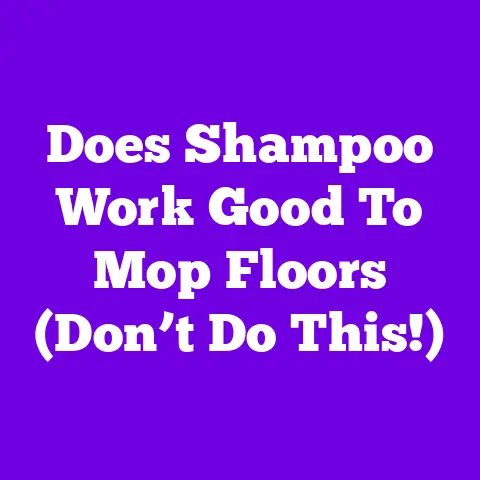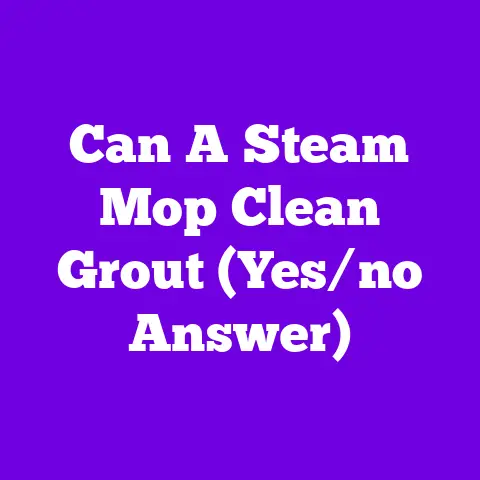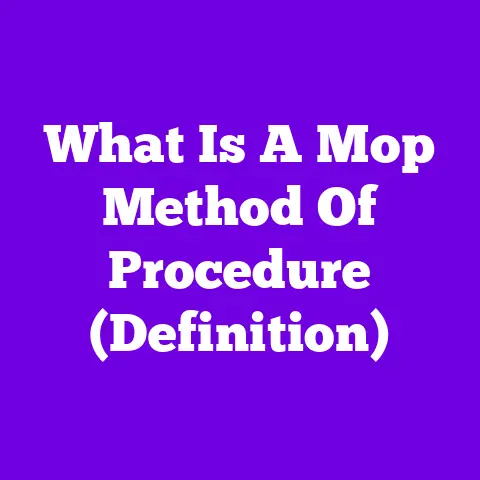How To Remove Mophead From Quickie Mop (4 Easy Steps)
Do you remember the first time you picked up a mop and felt like you were conquering the world of cleaning? It’s funny how something as simple as a mop can make us feel like superheroes in our own homes. The satisfying swish of a mop against the floor, the gleaming surface left behind—it’s almost therapeutic. But what happens when that trusty mop head starts looking worse for wear? That’s when you know it’s time to tackle the task of removing and replacing it.
Quickie mops are quite popular these days, and for good reason. They’re efficient, easy to use, and generally make our cleaning lives a lot simpler. But if you’ve never had to change the mop head, it might seem a bit daunting at first. Not to worry—I’m here to walk you through it step by step, just like we’re having a friendly chat over coffee.
Nostalgia and Connection
Before we jump into the steps, let’s take a moment to appreciate the humble mop. I remember my grandmother’s old mop—a heavy, stringy thing that seemed to weigh a ton. Watching her clean with it was like watching an artist at work. She’d have this rhythm, this dance as she moved around the room, leaving nothing but sparkling floors in her wake. It was a lesson in patience and care. Nowadays, with our modern Quickie mops, things are a bit easier, but the essence remains the same: clean floors bring a sense of peace and accomplishment.
Step 1: Gather Your Materials
Before you start tackling the mop head removal, it’s essential to gather all the necessary materials. Trust me, you’ll thank yourself later for being prepared. Here’s what you’ll need:
- Gloves: Always protect your hands from dirt and any cleaning chemicals that might still be on the mop.
- Replacement Mop Head: If you’re planning to replace the old one, have a new one ready.
- Small Bucket: Useful for catching any drips during the removal process.
- Towel: Handy for any unexpected spills or messes.
The Importance of Preparation
Preparation is key in any cleaning job. I learned this the hard way when I first started out as a janitor. There was this one time when I thought I could change a mop head without any gloves—big mistake! My hands were covered in grime, and it took ages to clean them properly. Now, I never start any task without making sure I have everything I need right by my side.
Helpful Tips:
- Stock Up on Supplies: Keep extra mop heads and cleaning supplies in your storage area. You never know when something might break or wear out.
- Organize Your Cleaning Closet: Having an organized space makes it easier to find what you need quickly.
Step 2: Prepare the Mop
With your materials ready, it’s time to prepare the mop for the head removal process. Here’s how you do it:
- Locate the Release Mechanism: Check out the top of the mop head where it connects to the handle. Quickie mops usually have either a button or a twist mechanism that allows you to release the head.
- Secure the Mop: Place your mop in a small bucket or on a towel on the floor. This way, any water from the mop head won’t create additional messes on your clean floor.
- Wear Gloves: Slip on those gloves before you start handling the mop head. You’ll want to keep your hands clean and safe from any residual cleaning agents.
Personal Experience:
Once, while working in a large office building, I was called to replace a mop head mid-shift due to an unexpected mess in one of the conference rooms. In my rush, I forgot to secure a bucket underneath and ended up with water all over the floor! Lesson learned: always be prepared for unexpected drips.
Warning:
Don’t force the release mechanism if it doesn’t move easily. Quickie mops are designed with user-friendly features, but applying too much pressure might lead to breaking parts of the mechanism.
Extra Insight:
The design of Quickie mops is all about ease of use. The release mechanisms are typically intuitive, but it’s always good to familiarize yourself with how they work before attempting to remove or replace the mop head.
Step 3: Remove the Mop Head
Now comes the main event—removing that old mop head! Follow these steps carefully:
- Press or Twist: Depending on your specific model of Quickie mop, you’ll either press a button or twist the top of the handle to release the mop head.
- Pull Gently: With the mechanism released, gently pull the mop head away from the handle. If it’s giving you trouble, try wiggling it slightly as you pull.
- Inspect the Mop Head: Take a moment to inspect the old mop head. Look for any tears or excessive wear that would warrant immediate replacement rather than just cleaning.
Example:
I remember one time when I was training a new team member on mop maintenance. She struggled with removing the mop head because she was turning it in the wrong direction. It took us a good 15 minutes of confusion before we realized the mistake! Always check which way you’re supposed to turn or press.
Common Obstacles:
- Stubborn Attachments: If your mop head won’t budge, check for any debris or dirt that might be causing it to stick.
- Old Mechanisms: Older mops may have worn-out release mechanisms that need a little extra care when handling.
Helpful Tip:
If you’re finding it difficult to remove the mop head, try applying a small amount of lubricant (like WD-40) to the attachment point. This can help loosen any stuck parts without causing damage.
Step 4: Attach New Mop Head
Got that old mop head off? Perfect! Now let’s get that new one on—or clean and reattach your existing one if it’s still serviceable.
- Align the New Mop Head: Make sure it lines up with the attachment points on the handle correctly.
- Secure in Place: Push until you hear that satisfying click or feel it lock firmly into place.
- Test It Out: Once attached, give it a gentle shake to ensure it’s securely fastened and ready for use.
Finishing Touches:
After attaching your new mop head, take a moment to wipe down your work area and store any tools or supplies you used back in their proper place.
Safety Consideration:
Be cautious of any sharp edges on older mops or replacement parts. It’s easy to accidentally nick yourself during this process if you’re not careful.
Anecdote:
A while back, I was helping out at a community center with a large cleaning project. We were racing against time before an event started, and I accidentally attached a mop head upside down! It was hilarious at first but taught me always to double-check my work before calling it done.
Common Mistakes to Avoid
Even seasoned cleaners make mistakes now and then—here are some common ones to watch out for:
- Forcing Mechanisms: Applying too much force can break release mechanisms.
- Skipping Gloves: Leads to dirty hands and potential contact with harsh chemicals.
- Ignoring Wear Signs: Missed signs of wear can lead to ineffective cleaning or damage during use.
Time Estimates and Difficulty Levels:
Changing a Quickie mop head typically takes about 5–10 minutes once you’re familiar with the process. The difficulty level is relatively low, but being mindful and prepared can make things go smoother.
FAQs
Q: What’s the best way to clean an old mop head?
A: Soak it in hot water mixed with mild detergent for about 30 minutes, then rinse thoroughly and let it air dry completely before reattaching or storing.
Q: How often should I replace my mop head?
A: It depends on how often you use it—generally every 3–6 months is ideal for regular home use.
Q: Can I use any brand’s replacement head?
A: While some generic replacements might fit, it’s best to use Quickie brand replacements for optimal fitting and performance.
Q: What if my release mechanism seems stuck?
A: Check for any built-up debris around the mechanism and apply some lubricant if necessary. If issues persist, consult Quickie’s customer support for further guidance.
Remember, practice makes perfect! Once you’ve done this a couple of times, it’ll become second nature. If you have any questions or run into issues along the way, just let me know!






